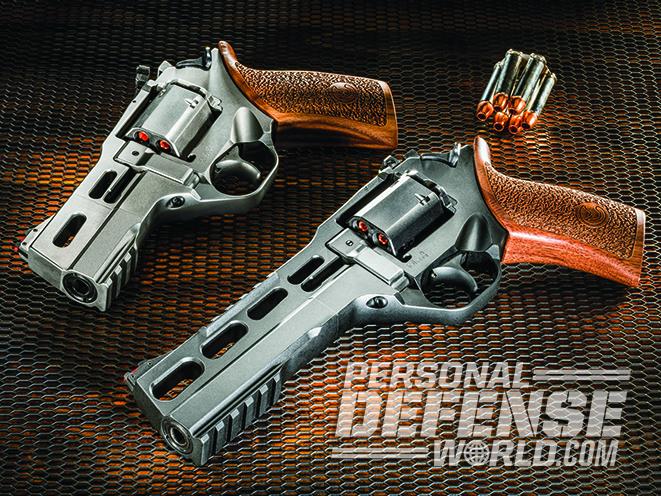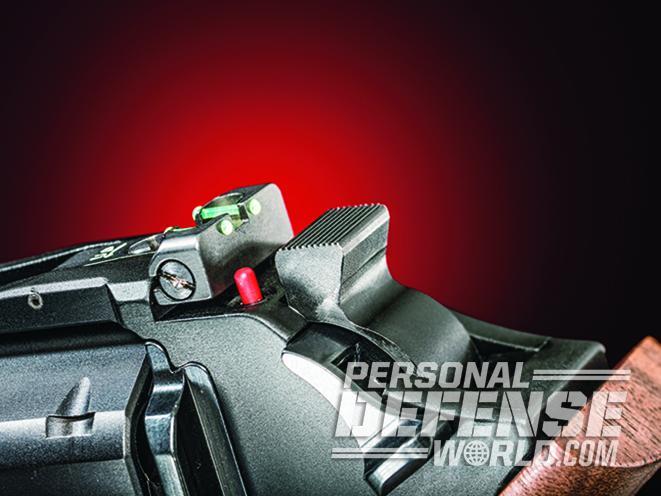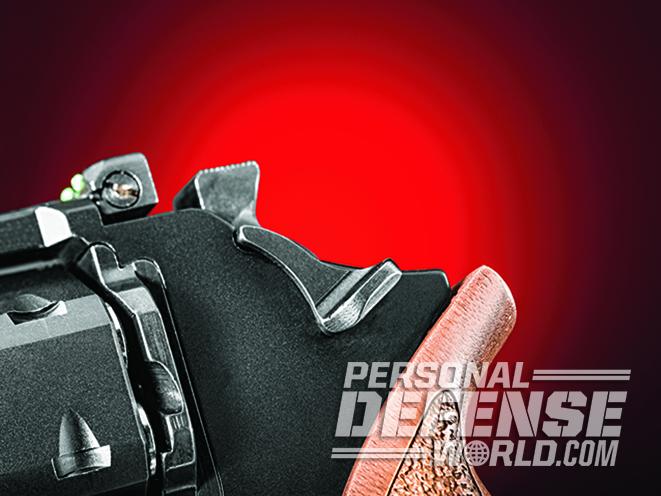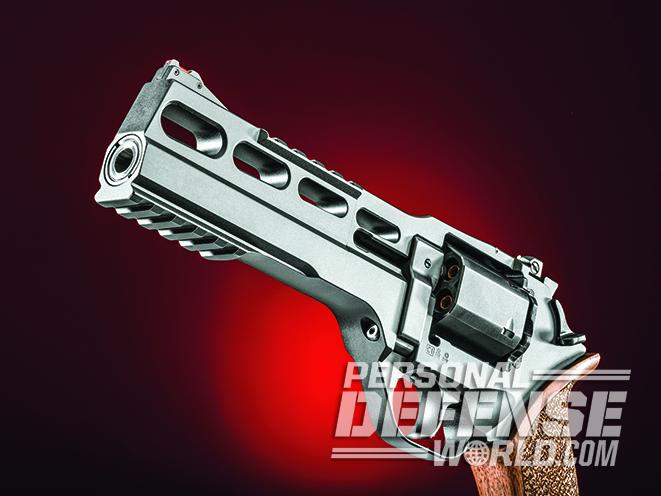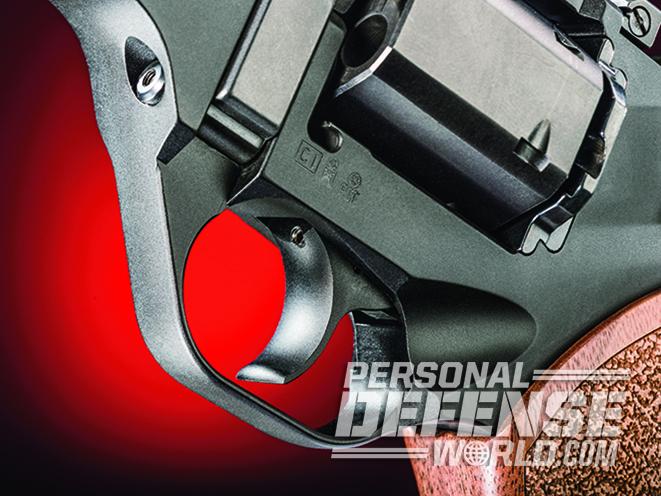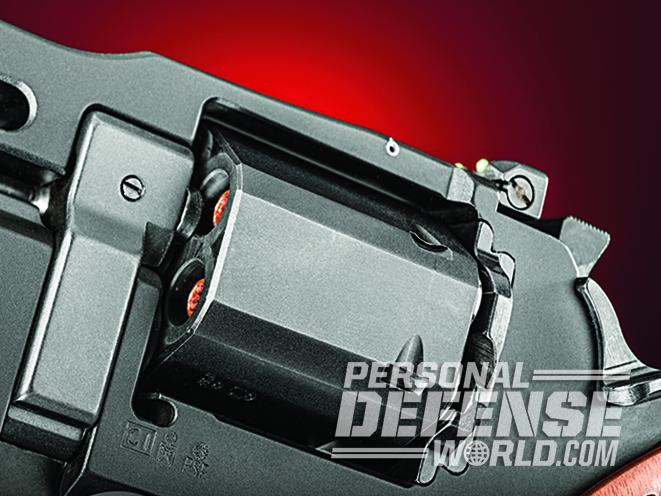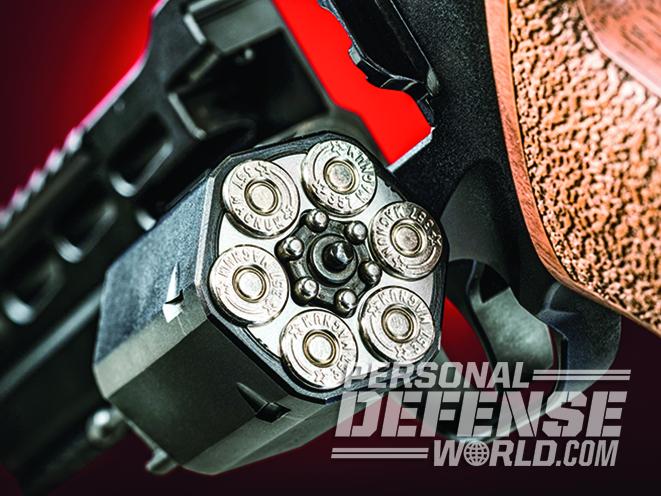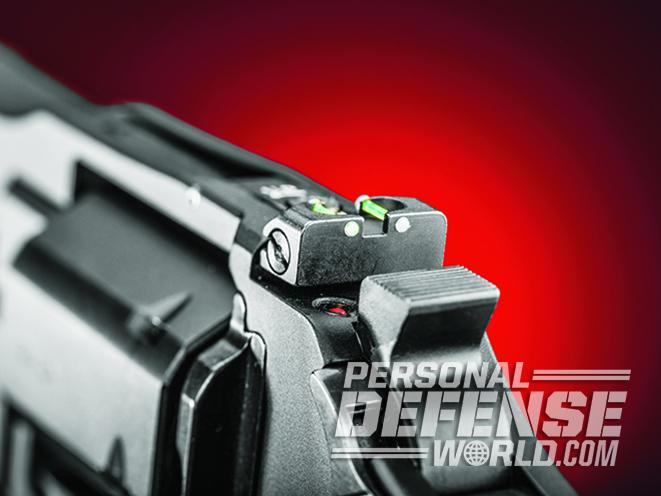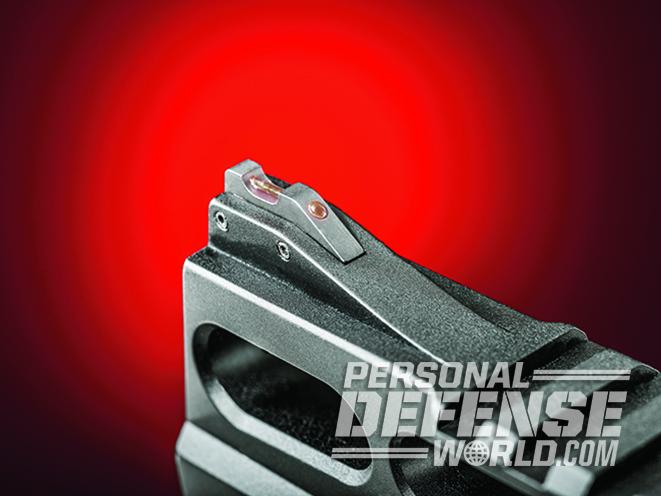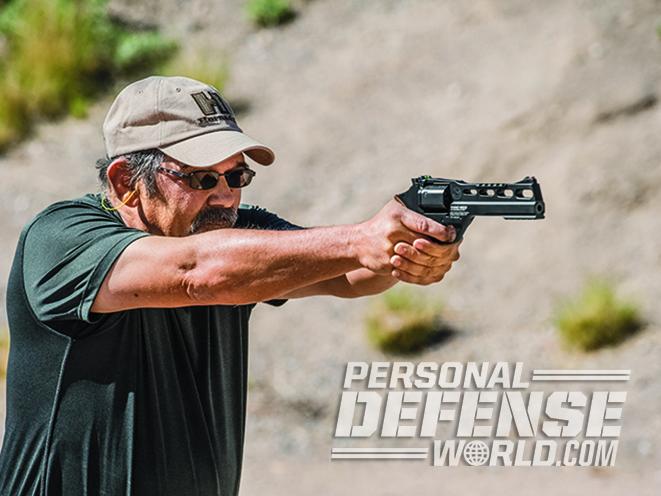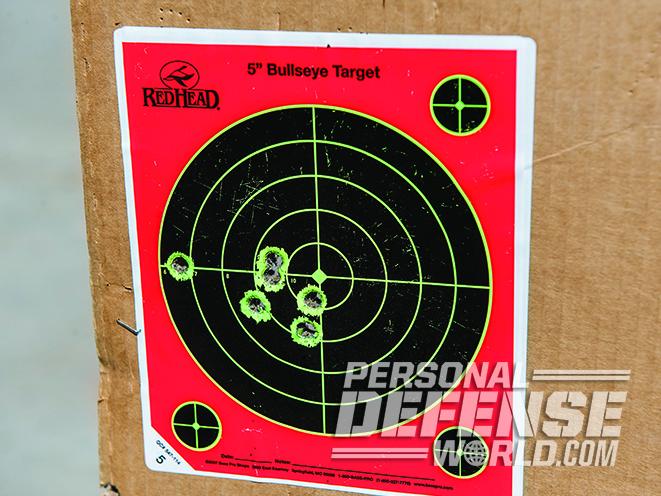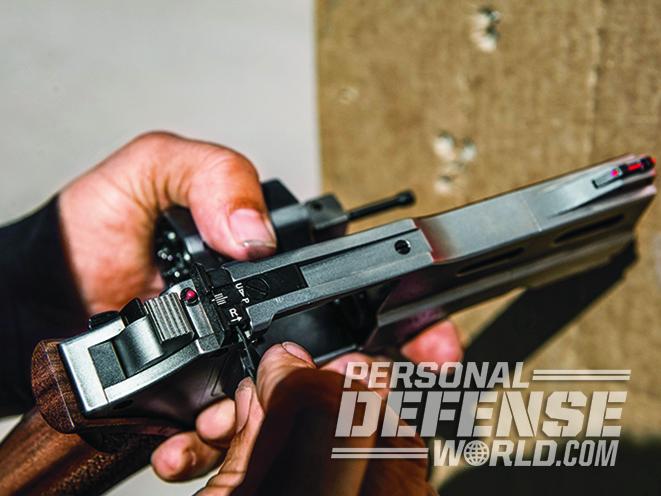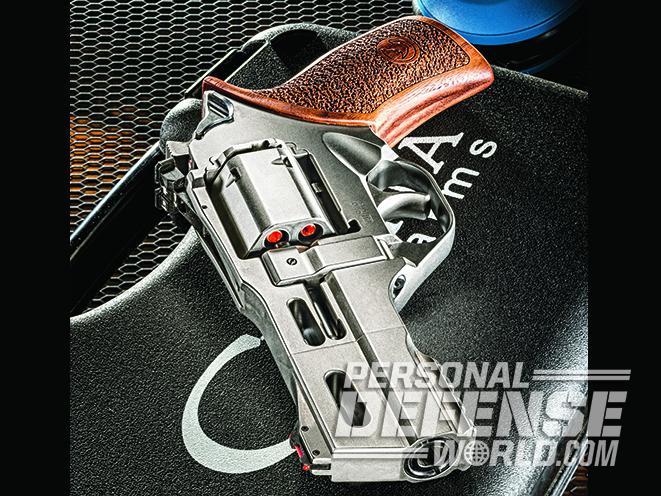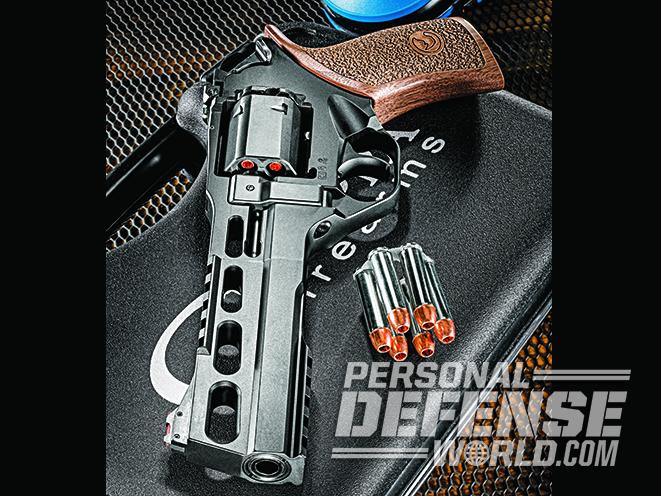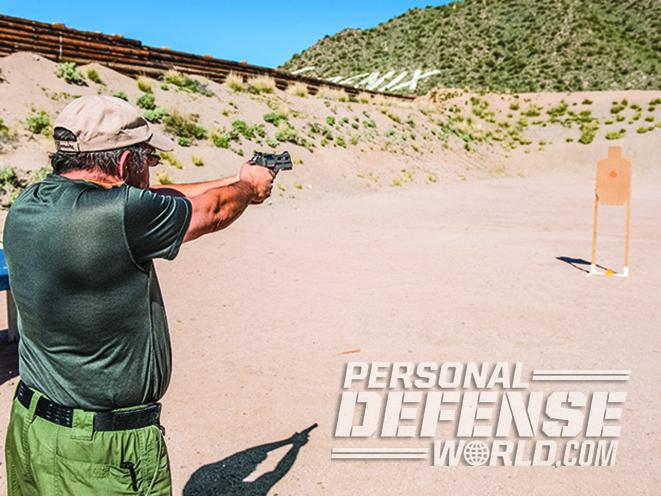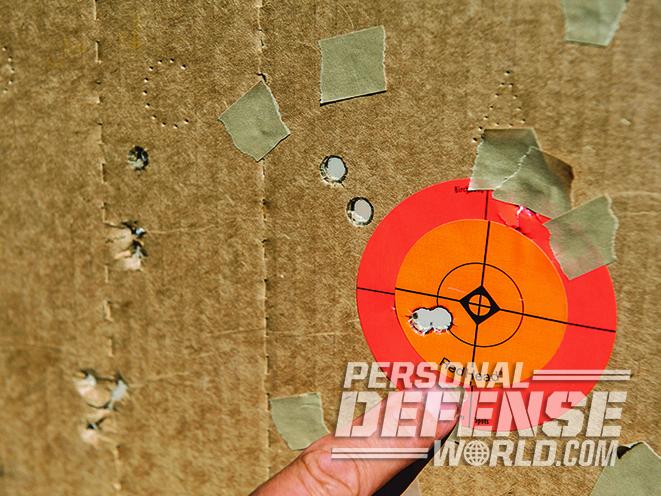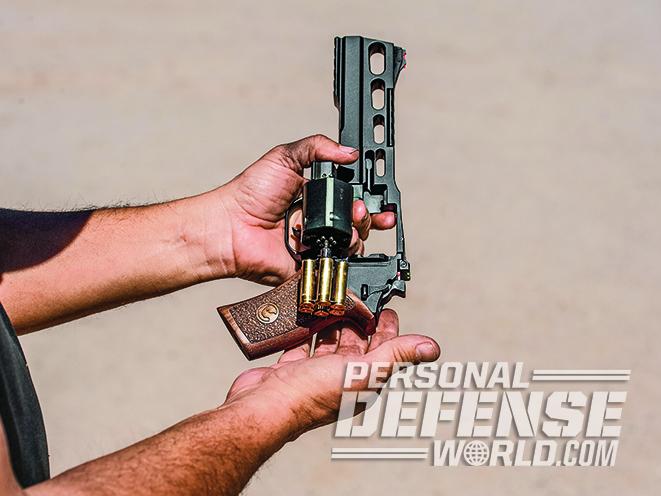The Rhino is a revolver produced by Chiappa Firearms of Italy that can shoot both .357 Magnum and .38 Special cartridges. Emilio Ghisoni and Antonio Cudazzo designed the Chiappa Rhino back in 2009. It borrows its basic design from the Mateba Autorevolver that Emilio Ghisoni designed in 1997. The Rhino’s most distinctive feature is the barrel, which lines up with the bottom chamber in the cylinder—not the top chamber like most other revolvers. This means the barrel of the Rhino is about 1.2 inches lower than a standard revolver’s, which translates to a lower bore axis.
Not only does this design maximize “pointability,” but it also drastically reduces recoil and muzzle flip compared to other revolvers. Powerful calibers usually cause handguns to rotate up and backward after firing, and this movement is proportional to the lever angle created by the high position of the barrel and consequent angle of the wrist. But compared to other revolvers, the Rhino’s innovative design and grip shape reduces these recoil forces by about 60 percent. The end result is that the shooter can get back on target quicker than ever before without having to adjust their grip on the gun.
Unique Features
Advertisement — Continue Reading Below

Besides the unique barrel/cylinder interface, the Rhino also features a slimmer profile than revolvers in the same caliber and class. That’s why it has a hexagonal cylinder instead of a more traditional round one. Also, the cylinder release on the Rhino is designed to allow a shooter to open the cylinder easily with one hand. Wood and neoprene grips are available for the Rhino, and they’re both designed to allow for a steady grasp, even if the shooter’s hands are wet. The frame itself is made of Ergal, an aluminum alloy, while the barrel, cylinder and other vital parts are made from steel.

The Rhino is a double-action/single-action (DA/SA) revolver, but it doesn’t operate like a typical wheelgun in this regard. The external cocking lever is not actually a hammer, as on most revolvers. Instead, it is used to cock the internal hammer and then falls back into place, minimizing the number of external moving parts but making the revolver more complicated internally.
Chiappa offers the Rhino with either a matte black finish or a brushed electroless nickel finish that the company calls hard chrome. The latter is sometimes called the “White Rhino,” and both styles are available with 2-, 4-, 5- or 6-inch barrels. The 2-inch-barreled Rhinos have fixed rear sights and simple black front sights. The 4- and 5-inch-barreled revolvers have fiber-optic front sights and adjustable black rear sights. The 6-inch-barreled versions come with fiber-optic front sights and adjustable rear sights with fiber-optic inserts for a three-dot sighting arrangement.
Advertisement — Continue Reading Below
Dynamic Duo

For this evaluation, I received two models: a chrome Chiappa Rhino 40DS with a 4-inch barrel and a matte black, 6-inch-barreled Rhino 60DS. Right off the bat, I was immediately surprised at how easily the revolvers pointed in my hand. The grip design is extremely ergonomic. The next thing I noticed were their triggers. Both revolvers had heavy DA trigger pulls. The SA trigger pulls were manageable, but I would probably consider getting an action job done on a Rhino before jumping into a competition.
The 4-inch-barreled Rhino 40DS is ideal for International Defensive Pistol Association (IDPA) matches. In fact, Italian IDPA shooter Giorgio Acerboni successfully shoots the Chiappa Rhino in the Stock Service Revolver (SSR) Division.
Advertisement — Continue Reading Below
- RELATED STORY: Hand Cannons – 9 High-Powered Magnum Handguns
The 6-inch-barreled 60DS, with its longer sight radius and fiber-optic sights, is a good choice for Bianchi Cup competition, but it is not legal for IDPA matches where the barrel length is limited to 4 inches. Also, most IPSC/USPSA shooters prefer to use shorter, 5-inch-barreled revolvers.
At the range, our first task was seeing what kind of velocities we could get with both Rhinos. We tested both revolvers with PMC’s 158-grain jacketed-soft-point (JSP) .357 Magnum ammunition. The Rhino 60DS gave us an average muzzle velocity of 1,269 fps for a power factor of 200.5, while the Rhino 40DS averaged 1,187 fps for a power factor of 187.55. As you can see, the 2-inch difference in barrel length accounted for an 82-fps difference in velocity, which is more than I would have expected. But the most amazing aspect of firing these guns came in terms of felt recoil and muzzle flip. Although the recoil was sharp like other .357 Magnum revolvers, there was very minimal muzzle flip with both models.

Even though we chronographed both models and test-fired them both to evaluate their functioning, we decided to focus on the Rhino 60DS when it came time to get accuracy measurements because we liked the fiber-optic sights for the task. We sighted the Rhino 60DS in at 10 yards with two-round groups so we could adjust the sights to perfectly match the point of aim. Shooting in SA mode, we were incredibly surprised by the Rhino 60DS’ accuracy. Our two-round groups were actually touching each other. The only thing we had to do was to adjust the fiber-optic rear sight a couple of clicks down and a few clicks to the right to achieve our goal.
Advertisement — Continue Reading Below
For the final accuracy test with the Rhino 60DS, we fired a six-round group at our test target, but this time we fired in DA mode to simulate the way the revolver would be fired during an action shooting competition. We found that the group increased in size due to the heavy DA factory trigger pull, but the inherent accuracy was still visible on our test target.
There is one caveat that comes with the fact that the Chiappa Rhino fires from the bottom chamber of the cylinder instead of the top: The shooter should not use a thumbs-forward grip while holding the revolver. This would put the shooter’s support-hand thumb dangerously close to the gap between the cylinder and the barrel’s forcing cone. This can cause anything from a minor burn to a serious cut. I learned this fact the hard way when I burned my left thumb, not once but twice. This made me change my shooting hold to a different position to avoid another painful sting. Of course, this same caveat applies to all powerful revolvers.
Blazing Speed
Advertisement — Continue Reading Below

After our accuracy, chronograph and function tests, I came to the conclusion that these are some of the most accurate handguns I have tested in a long time. The only thing I would improve in the Rhino series is the DA trigger pull. If it can be smoothed and lightened, Chiappa’s Rhinos can be the fastest and most accurate revolvers in production today.
- RELATED STORY: Upgrading Chiappa’s Bootleg 12-Gauge Lever-Action Shotgun
My fellow IDPA shooter Giorgio Acerboni can attest to this fact, and I have seen him accurately shoot the Chiappa Rhino with blazing speed, proving just how fast, accurate and powerful this unusual-looking revolver can truly be.
For more information, visit http://www.chiappafirearms.com.
Advertisement — Continue Reading Below
This article was originally published in ‘Complete Book of Revolvers’ #189. For information on how to subscribe, please email subscriptions@
